|
Quote of the Day:
"One can invent mathematics without knowing much of its
history. One can use mathematics without knowing much,
if any, of its history. But one cannot have a mature
appreciation of mathematics without a substantial
knowledge of its history." -- Abe Shenitzer
Objectives:
The student will compute the volume of solids of revolution
using the disk method (slicing).
Materials needed:
Styrofoam disks of various sizes along with a dowel.
Power Drill and safety glasses.
Styrofoam cut-outs mounted on dowels.
1. Collect homework.
2. Recall that to find the area of a plane region, we
divide the region into thin rectangles, add the areas of
rectangles to form a Riemann sum, and then take the
limit of the Riemann sums to obtain an integral for the
area:

3. This week, we are going to examine volumes of solids of
revolution. We use the same strategy to find the volume
of a solid. We will divide the solid into thin slabs,
approximate the volume of each slab, add the
approximations together to form a Riemann sum, and then
take the limit of the Riemann sums to form an integral
for the volume of the solid.
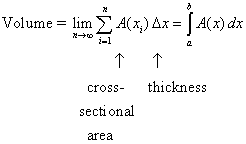
In our first method, we will be summing up volumes of
disks (or cylinders).
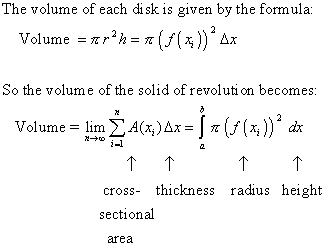
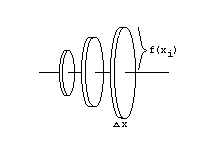
Show Styrofoam circles on a dowel to illustrate this
idea.
4. Example

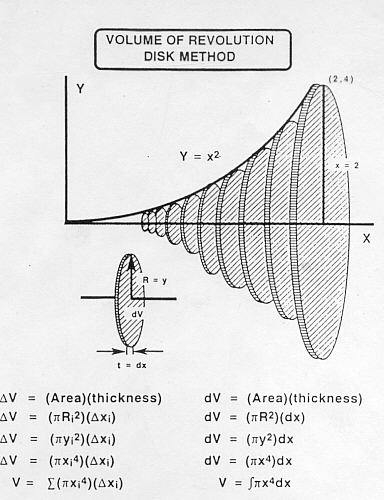
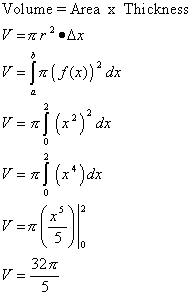
5. One of the most difficult things to do when working with
volumes of solids of revolution is to visualize the
shape that is being formed.
To help with this visualization process, use one of the
following techniques:
(A) Use styrofoam disks
Click here for a picture
(B) Use power drill with Styrofoam cut-outs mounted on
dowels. When the styrofoam rotates it traces out
the solid of revolution.
Click here for a picture
(C) Do some edible calculus (by Nancy Dirnberger): (USE after SHELL METHOD)
If you core an apple you have a great solid of
revolution with a hole through the solid! An apple
is usually sliced in one of two ways. If you slice
it so that the plane of the slice contains what
would be the axis of revolution, your apple slice
(actually you have two) is a disc of revolution. You
can almost slice it thin enough to have width dx! If
you slice the apple into rings, the resulting slices
are washers that will give you the same volume when
added. With a large, thick slice of a Bermuda onion
you can pull up onion rings as successive
cylindrical shells. Students often have a problem
visualizing these cylindrical shells.
6. Determine the volume of a sphere.
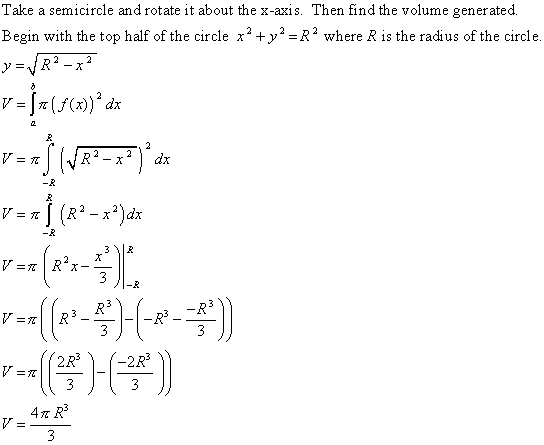
7. Example (with respect to the y-axis)
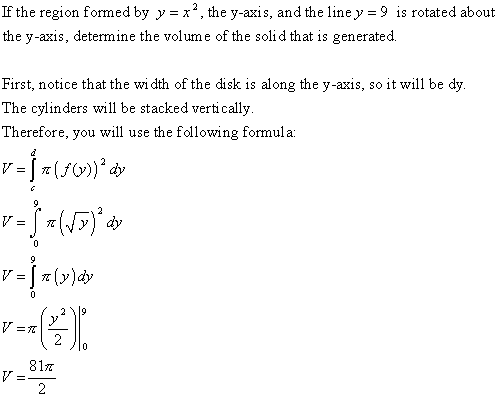
8. Assignment:
p. 456 (1, 3, 7, 10, 13)
Click here to go to the next page
|








